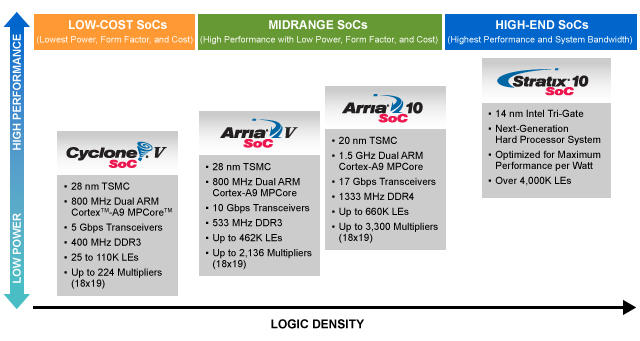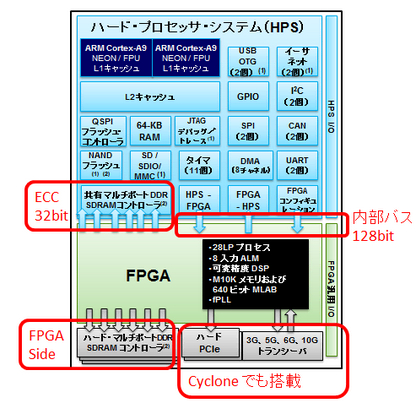Overview of Intel SoCs for Embedded Systems

Intel SoC Features
The system architecture of the Intel SoC provided by Intel is as follows and has various features.

|
|
|
|
|
|
|
|
|
5 Reasons to Design with Intel SoCs

Reduced board size
Minimize board size and complexity by reducing the number of devices on the board by integrating FPGA, microprocessor, and DSP functions on a single chip

Reduced power consumption
インテル SoC を利用すれば、インテルに最適化された 28nm Low-Power (28LP) プロセス・テクノロジ、豊富なハード IP 群、および低消費電力シリアル・トランシーバを活用可能

Reduce total system cost
必要なディスクリート・デバイス、電源レール、およびオシレータの数が少なくてすむため、部品 (BOM) コストの削減を実現

Design with FPGA flexibility
Quickly build a custom ARM processor system by choosing the best IP cores. In addition, flexible FPGA fabric supports changing industry standards and market demands. In addition, you can quickly develop custom hardware designs using the Quartus® II development software and Qsys system integration tools

Common development tools
Leverage ARM's strong ecosystem of software development tools, operating systems and middleware
Further Expanding 28nm FPGA Portfolio
Intel offers a complete 28nm device portfolio to suit your diverse design requirements.
SoC FPGAs expands on the extensive Cyclone V SoC FPGA and Arria V SoC FPGA families. Each device family is differentiated by part number by optimizing requirements for performance, I/O resources, package size, power consumption and cost.
Intel SoC details and reference information
Featured in APS (ARM Partner Case Studies) Premium Talk Session


